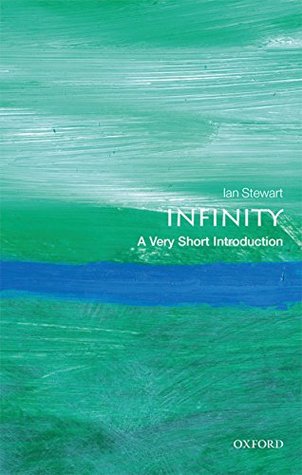More on this book
Kindle Notes & Highlights
Zeno’s paradoxes have a deceptive simplicity, but they challenge our intuition about space, time, motion, and causality.
Infinity is, perhaps, a mental default, a natural side effect of the pattern-seeking abilities of our minds. Evolution has moulded us to notice patterns in the external world, be they real or imaginary. Patterns have survival value. Going on forever without changing is perhaps the simplest pattern of all.
If the universe ends somewhere, there’s nothing beyond, not even empty space. And the universe could be finite but unbounded.
Infinity isn’t a thing, but a concept, related to the default workings of the human mind. Zeno’s paradoxes appear to be about physical reality, but they mainly address how we think about space, time, and motion.
On several occasions I’ve rather casually called infinity a concept. It’s not. It’s a meta-concept: a jumble of more or less related ideas, masquerading under the same name.
Infinity is not just a synonym for a very big number. We often use it that way, for poetic or dramatic reasons, or just out of ignorance, but in mathematics and philosophy infinity is a different concept altogether: not a very large limit, but the absence of any limit.
Since we find it difficult to comprehend time stopping, we assume that it never will. The belief that ‘it must continue’ underpins all religions that believe in an afterlife.
Space going on forever is infinite; time going on forever is eternal. The former carries connotations of ‘very large’. The latter of course refers to an endless period of time, but it has a second connotation: stability. Anything that lasts an eternity is considered, in some sense, to be unchanging.
Kant considered Euclidean geometry to be necessary and universal. We now know that it’s neither, not even within mathematics. Empirical observation has shown that real space isn’t Euclidean.
Causality corresponds roughly to a ‘partial order’, in which a given entity can be larger than another, smaller, or the two may be incomparable. For a partial order, minimal elements need not exist, but even when they do, they need not be unique. Without uniqueness, there’s no rationale for identifying just one of a multitude of First Causes with any particular entity, real or hypothetical.
Mathematics is conceptual, both in its objects and its processes.
It’s not impossible to set up a finite version of arithmetic with a very big largest number, but it’s inelegant and difficult to work with. Mathematicians prefer their patterns to be universal in scope, so they embrace the infinitude of the whole numbers. Infinity is simpler than some specific but inexplicit very large number.
The line at infinity is very weird: it’s circular and straight at the same time. It’s straight in the sense that in whichever direction the artist looks, the horizon in the image is straight. But it’s a circle in the sense that, if the artist slowly spins round through 360 degrees, that perfectly straight horizon keeps extending and extending…until eventually it joins up with itself.
you can’t distinguish a finite universe from an infinite one by measuring its curvature.
The natural numbers are countably infinite, but the real numbers are uncountably infinite.
translating proofs from the language of the infinite to the language of the finite often turns simple, transparent statements into tortuous, laborious ones. Set theory is a thinking tool, and a very powerful one, because it makes complex ideas simple.


